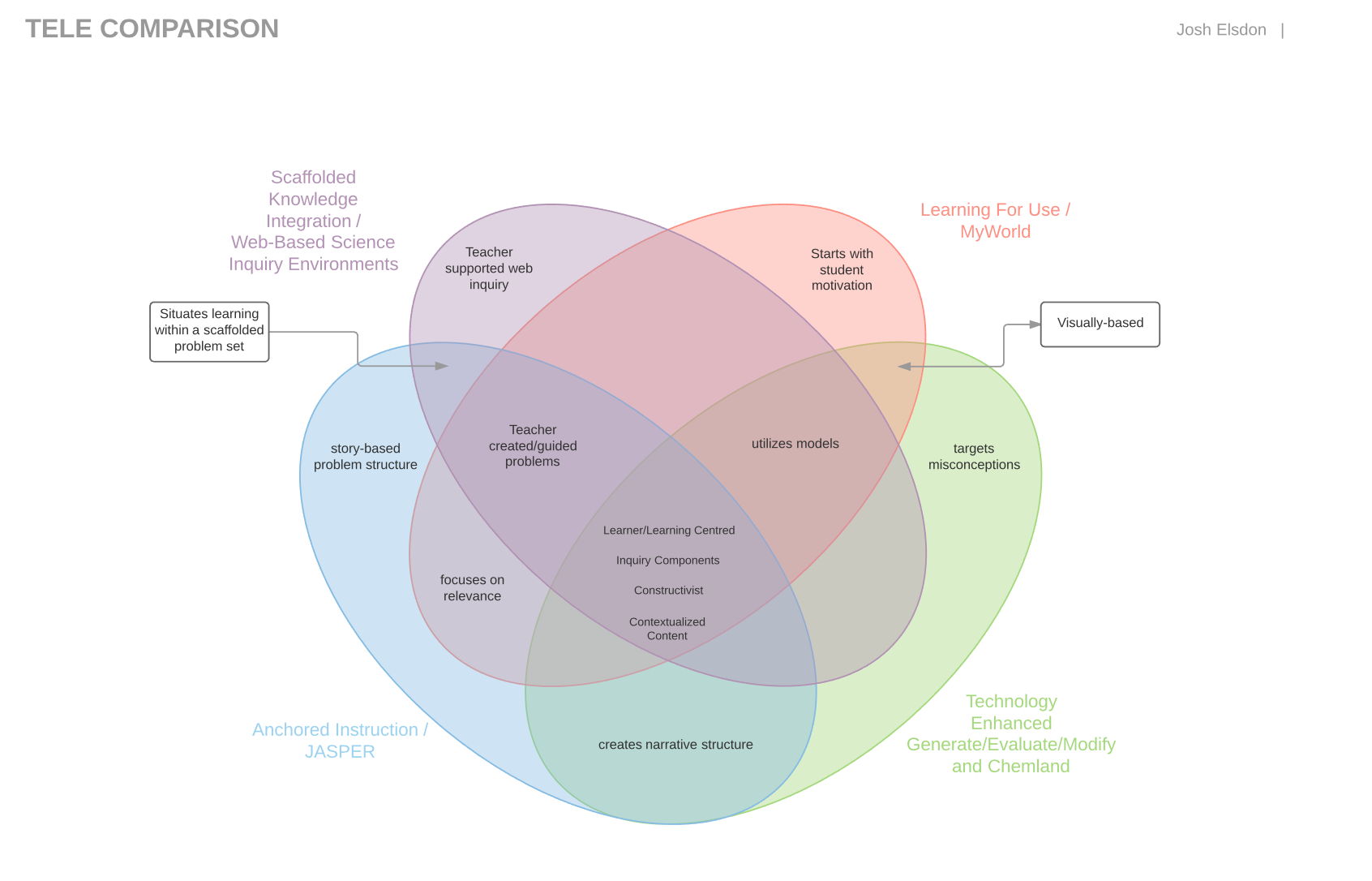
After exploring these 4 TELE’s, it is clear that they all are built on the premise that learning is constructed through experience – by moving through cycles of dissonance, integration, and resonance. These shared roots in Constructivism serve to guide each tool/framework toward student-centred, reflective, and collaborative learning. In addition, inquiry has some implicit or explicit role in each approach. Another theme that emerged was that content is not as meaningful without a context. Each one of these TELE’s, to varying degrees, aims to make learning relevant and meaningful, contextualizing it and attempting to create (or have students create) problems they are motivated to solve.
Personally, experiencing these TELE’s has been very inspiring to the science teacher in me, and created longing in the math teacher inside me. The science based TELE’s provide not only theoretical and philosophical frameworks for enriching learning, but also specific ways to reimagine the lab experiment experiences of our students. The math teacher in me still pines for authentic, inquiry/project-based experiences for my students. The benefits of some of the frameworks, especially T-GEM, are clear: using models to identify and modify misconceptions (I think of examples like modelling how subtracting a negative is the same as adding a positive or how area models can help explain visually the concept of multiplying fractions) is a powerful strategy. However, when I try to create a web-based inquiry environment for math, I continually stall. This is likely a lack of imagination on my part, and I can’t help but feel that my students are the poorer for it. I am determined to continue searching, creating, tinkering, and collaborating until I can provide the same rich TELE experience for my math students as I now can in science.
References
Cognition and Technology Group at Vanderbilt (1992a). The Jasper experiment: An exploration of issues in learning and instructional design. Educational Technology, Research and Development, 40(1), 65-80.
Edelson, D.C. (2001). Learning-for-use: A framework for the design of technology-supported inquiry activities. Journal of Research in Science Teaching,38(3), 355-385.
Khan, S. (2007). Model-based inquiries in chemistry. Science Education, 91(6), 877-905.
Linn, M., Clark, D., & Slotta, J. (2003). Wise design for knowledge integration. Science Education, 87(4), 517-538.
Hi Joshua,
I love your visual. I struggled with the overlap of my circles and the ovals just make so much sense. Your visual is easy to understand, well detailed and hits on so many areas. I like how you named some of the overlap areas visually based and scaffolding. Good luck as you continue to look for and develop TELE’s for math. It is so great when our teaching becomes invigorated with new ideas.
Catherine
I agree with the concept of experience and context as the common threads of the TELEs. I think an important shift in my own thinking has been how I define experience. Rather than being limited to physical movements and activities, experience can be working with an idea in a representative sense as well. I have come to see a potential learning experience as any situation in which a student is genuinely interacting with something or someone.
I sympathize with the struggle in math. I have not yet replied to your comment on my post from last week regarding math applications, but it is something that I continually return to in my own thinking. I will let you know if I come to any revelations!